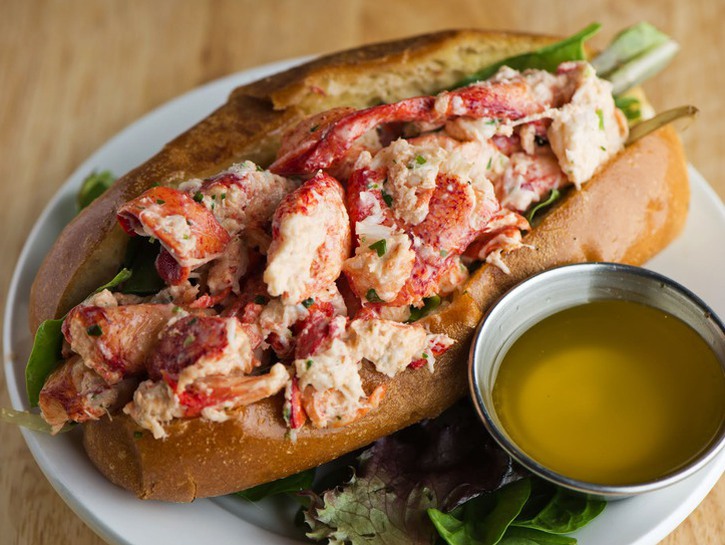There’s a sandwich in New England which defines the region’s take on which seafood option is king. Of course, we’re talking about lobster rolls. Some places have fish or shrimp tacos. Others do crawfish boils, crab legs and other shellfish specialties. But in New England, it’s all about the lobster rolls, and maybe the clam chowder too. If you live outside of the region, the quality of any lobster roll you receive will vary wildly. Here is our guide to everything lobster roll, and how to tell if you’ve found a hidden gem, whether you’re in New England or not.
Types of Lobster Rolls

There are two main “styles” of lobster roll. Some restaurants will offer both, while others specialize in one or the other. After you learn about these two distinct serving styles, you’ll be able to spot the difference a mile away. These, of course, are Maine style and Connecticut style. At first glance, you may be just thinking that the difference is what part of the Atlantic the lobsters were fished from; however, the difference is actually in the preparation.
Maine Style

Maine style lobster rolls use a cold lobster filling. The sweet and salty lobster meat is lightly coated in butter and served with a bit of lettuce inside of a warm buttered bun. It’s essential that the bread is toasted to help it maintain its structure. However, if you eat one, you would without a doubt, put it in the cold sandwich category. Maine style lobster rolls are delicious, refreshing, and addicting, however, they don’t hold the crown for being the first lobster rolls to come into existence.
Connecticut Style

Connecticut style lobster rolls hold the crown for being the original lobster roll. Unlike the filling found in Maine style rolls, Connecticut style lobster rolls have a hot lobster filling which is coated in butter. The bun is also toasted. It’s almost like having lazy man’s lobster on the go!
What’s Better, Maine Or Connecticut?

Ask anyone what they prefer and you’re likely to get a different answer. There’s nothing that makes a Maine style of Connecticut style better than the other overall. The real comparisons will come down to who has the best lobster roll hands down, regardless of style. If you haven’t had both styles yet, take some time to try them and formulate an opinion of your own. Both Maine and Connecticut style rolls are out of this world good.
Watch Out For Lobster Salad!

While you’re on your journey of lobster roll self-discovery, there are some pitfalls you absolutely need to watch out for. One of the biggest red flags you can run into is a “lobster salad roll.” These abominations are hardly worthy of the title.
Lobster salad consists of cold lobster meat. That sounds like Maine style, but the similarities end there. Instead of a light coating in mayonnaise, lobster salad rolls have lots of it. There are also lots more filler ingredients such as extra lettuce or cole slaw. If you’re at a restaurant serving lobster rolls, watch to see if you can see any others heading out to tables. If it looks like it might be a lobster salad roll, steer clear.
Be especially wary if the price is too good to be true. That will be one of your first red flags that a lobster salad roll is on the menu. Unfortunately, there are no regulations in the FDA in regards to advertising a lobster salad roll as a real lobster roll.
How To Tell If You’ve Found A Winner

Now that you’re an expert on locating an authentic Maine or Connecticut style lobster roll, it’s time to separate the wheat from the chaff. Here are a few key features that make up a winning lobster roll.
The bread-to-lobster ratio should never weigh in favor of the bread. In fact, it’s not bad if there’s so much lobster you can’t pick it up normally until you eat some of it with a fork.
Next, the lobster needs to be well-seasoned and flavorful. It’s possible for lobster to be bland or tough. Good quality lobster helps make a good quality lobster roll.
Lobster rolls are a delicious New England tradition. Choosing whether Maine or Connecticut style is better will come solely down to preference once you’ve weighed out poorly constructed rolls.
